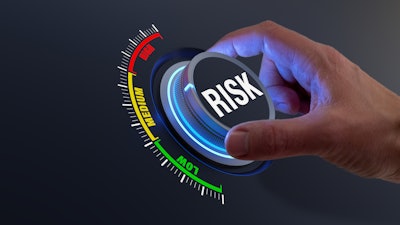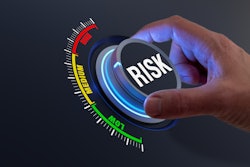
Cybercrime isn’t just evolving; it's mutating into something far more dangerous. From ransomware attacks to data breaches, supply chains have long been a prime target for cybercriminals. Now, a new trend is making these threats more accessible and scalable than ever: Malware-as-a-Service (MaaS), the dark web’s twisted version of SaaS (Software-as-a-Service).
With just a few clicks on the dark web, bad actors can rent malware kits and launch sophisticated cyberattacks against vulnerable systems, without writing a single line of code. MaaS is fueling a new generation of cyberattacks where anyone with a grudge and a few hundred quid can strike harder than ever before. This isn’t just petty theft anymore. It’s industrial-scale cyber warfare, and it's getting worse by the day.
What is MaaS?
Malware as a Service is exactly what it sounds like: hacking for hire. Criminals rent out top-shelf malware tools to anyone willing to pay with no coding skills required. It’s like an online marketplace for cybercrime - click, pay, launch an attack. These services come fully loaded with slick dashboards, technical support, regular updates, and sometimes even loyalty discounts. It’s disturbingly professional, and it’s thrown open the gates for anyone with bad intentions to join the cybercrime boom. And it doesn’t stop at just handing over the malware.
The authors often guarantee success, offering refunds or replacements if the malware is detected too easily or fails to deliver. They bundle in ancillary services too, such as phishing kits, obfuscation tools, Cryptor's, even money laundering networks, to wash dirty Bitcoin into clean cash.
They also warn customers not to upload samples to public antivirus sites since those services share samples with antivirus companies. One careless upload, and the malware is exposed and neutered. In short: they don’t just sell you the gun; they teach you how to shoot, clean the fingerprints, and get away with it.
The dangerous supply chain effect
The threat of MaaS extends far beyond direct attacks on enterprise networks, as it is systematically weaponizing the global supply chain. While many organizations spend heavily in hardening their own IT infrastructures, their exposure often lies in the hands of third-party vendors, suppliers, and service providers. One compromised supplier with weaker defenses can provide cybercriminals with a direct, unguarded path into otherwise well-fortified environments.
MaaS tools are cheap, scalable, and widely accessible, offering full support and regular updates much like legitimate software services. Cybercriminals can simultaneously target multiple nodes across an entire supply chain. In such scenarios, threat actors aren’t looking for fortified gates; they’re scanning for a single, overlooked vulnerability or a moment of human error, a missed patch, a misconfigured setting, or one misplaced click that can bring down entire operations. The rise in high-profile supply chain attacks such as SolarWinds, Kaseya, and MOVEit underscores the evolving risk landscape. These incidents serve as stark reminders that the cybersecurity posture of third parties is not peripheral but integral.
As MaaS continues to lower the barrier to entry for attackers, supply chain organizations must shift their mindset: every supplier, partner, and contractor is part of their extended attack surface.
What’s the solution?
To minimize the risk from MaaS attacks, supply chain companies must fundamentally rethink their cybersecurity posture. This means becoming smarter, faster, and more adaptive than the threats they face. They can follow the below key strategies to protect against MaaS attacks:
1. Real-time threat intelligence
Businesses need to understand that defending against MaaS begins with visibility. Real-time threat intelligence must become a core capability, not just an add-on. Cybersecurity systems within the supply chain landscape need to be able to detect, contextualize, and respond to evolving threats before they escalate. Static dashboards or delayed reporting won’t cut it in a world of AI-driven malware that evolves mid-attack.
2. Empowering the weakest link
Human workforce remains both the greatest asset and the weakest link in cybersecurity. Organizations must foster a culture of vigilance by ensuring every employee is trained to detect social engineering tactics, phishing attempts, and anomalous activity. Cyber hygiene should be embedded across departments, not siloed in IT.
3. Zero trust as a default
The traditional “trust but verify” model is no longer viable. Today’s reality demands that organizations assume breach at every level. The Zero Trust model, where identity is verified continuously and access is granted minimally, is now the standard for building resilient security architectures.
4. Strict processes
Third-party vendors can often be the weakest point in a security chain. Supply chain companies must demand transparency and strict compliance from all their suppliers. Vendors and suppliers who fail to comply with regulations and meet transparency requirements must be replaced. Vetting must go beyond contracts as continuous validation is key.
5. Geo-fencing
One of the simplest yet most effective strategies is geo-fencing. By restricting access from regions with no commercial relevance, organizations can reduce unnecessary exposure. Where trade is essential, businesses should consider routing operations through local partners to contain regional risks.
Looking ahead
The increasing threat landscape poses significant risks to supply chain organizations. AI-generated malware, autonomous ransomware botnets, and cybercrime-as-a-service subscription models are already emerging. Security leaders need to evolve faster, leaning into automation, AI, and ruthless supply chain vetting.
Trust must be earned continuously. Every vulnerability, whether digital or human, must be treated as a potential entry point. Supply chain businesses and those who continue to evolve their security strategies will be more likely protect their critical data from MaaS attacks.
















